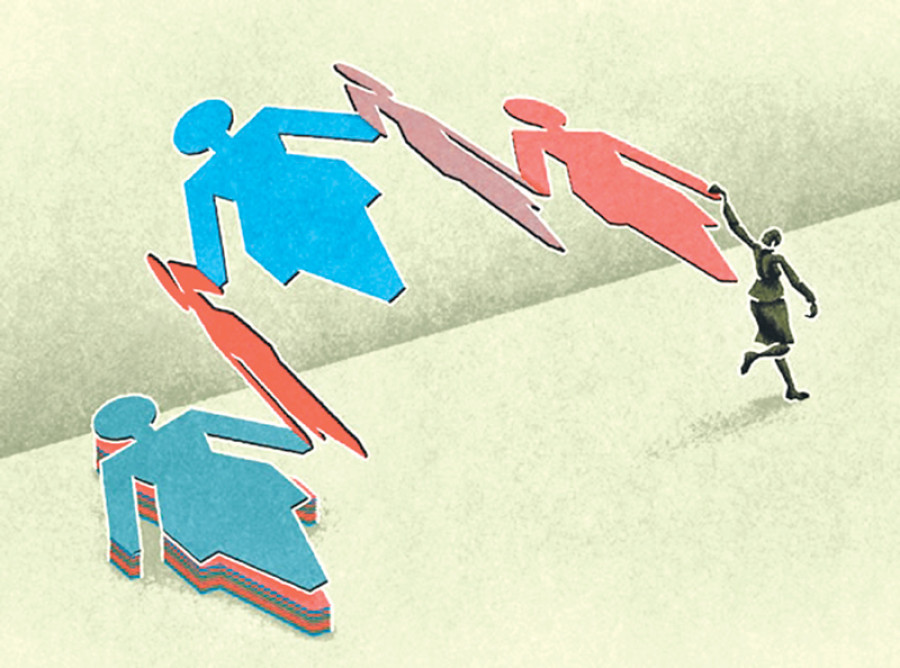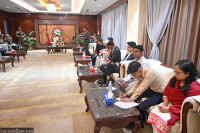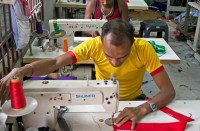Opinion
Women’s day, every day
Advancing the status of women is not only the right thing to do, it is also the smart thing to do
A few weeks ago, International Women’s Day celebrated the social, economic, cultural and political achievements of women. In the US, we observe the entire month of March as “Women’s History Month” and honour women who sacrifice to ensure that all people have an equal opportunity to pursue the American dream. In commemorating the efforts of women to achieve equality, we also honour, acknowledge, and elevate the basic human rights of girls and women. The first article of the Universal Declaration of Human Rights states that “all human beings are born free and equal in dignity and rights.” Too often women have to remind their families, communities, and countries of this universal norm.
The benefits
If the standard of parity in basic rights was not enough, there are powerful economic and political reasons for societies to seek to ensure gender equality. According to the management consulting firm McKinsey & Company, if women around the world participated in the global economy on an equal footing with men, then as much as $28 trillion could be added to annual global Gross Domestic Product (GDP) by the year 2025. The World Economic Forum Gender Gap Report shows that where the gender gap is closest to being eliminated in a range of areas—including economic and political participation, access to education, and health—countries and economies are more competitive and prosperous.
In the US, the Department of Commerce reports that women own nearly eight million businesses accounting for $1.2 trillion of our GDP. Over the past 40 years, American women went from holding 37 percent of all jobs to nearly 48 percent. This steady increase in women’s overall share of the labour market accounts for approximately one-quarter of the current GDP of the US.
Despite statistics like these, women continue to be economically disempowered in many countries. The World Bank reports that while women account for about 40 percent of the total global workforce, they make up 58 percent of all unpaid work and 50 percent of informal employment. According to the Institute for Women’s Policy Research, women in the United States still earn, on average, 21 percent less for every dollar made by men. In Nepal, three-quarters of women work in agriculture, but many of the women are unpaid. Leaving women out of the formal economy disadvantages them, and creates economic loss for society at large. According to the International Monetary Fund (IMF), legal barriers to women’s labour force participation result in GDP losses of up to 30 percent.
Women in politics
Just as the active participation of women in the workforce helps economies to grow, the American experience shows that female legislators get things done in the political arena. According to Quorum, a company that tracks data on US legislators, women in the US Senate have, on average, introduced more new legislation than their male colleagues over the last six years. Since 2009, the average female senator submitted 96 bills, while the average male senator submitted 70. Bills introduced by women senators made it out of committees more often, and were successfully enacted at a higher rate than those introduced by men. The women of the US Senate repeatedly demonstrate a willingness to mount bipartisan efforts and work on legislation with each other. For example, in 2013, it was the women of the Senate who came together to help end the US government shutdown. Led by Republican Senator Susan Collins of Maine, most of the 20 women Senators worked together to craft a compromise to end the crisis, a model that drew on the best traditions of participatory democracy.
After Nepal promulgated its new constitution last September, it made history by selecting the country’s first female President, Bidhya Devi Bhandari, and female Speaker of Parliament, Onsari Gharti Magar. Nepal has also just nominated Sushila Karki to be the first female Chief Justice of the Supreme Court. Still, women’s participation in government and political decision-making in Nepal is limited. In the 2013 national elections, only ten women were elected in the 240 first-past-the-post constituencies, and nearly all of the senior leadership positions in the major political parties are held by men. Even so, these women now have the opportunity to introduce legislation, pass laws, and make decisions that will support gender parity and economic growth.
Issue of citizenship
Women in Parliament can also improve laws that discriminate against women, such as those regarding citizenship. According to the United Nations High Commission on Refugees, in more than 60 countries around the world, nationality laws deny women equal rights with men to acquire, change or retain their nationality, or to confer their own nationality to their foreign or stateless husband. In 27 countries, including Nepal, women do not have the same rights as men to confer nationality to their children. In Nepal, a provision in the constitution prevents Nepali women married to foreigners from transmitting citizenship to their children. This is unfair to women, and also creates the risk of statelessness for their children. As the government prepares legislation to amend or replace the current citizenship law, we urge officials and legislators to ensure the law allows all Nepali parents to transmit citizenship to their children on an equal basis.
US Secretary of State John Kerry said, “No country can get ahead if it leaves half of its people behind.” Countries are more stable, peaceful and prosperous when women are healthy, educated and able to fully participate in their economies and societies. Advancing the status of women is not only the right thing to do, it is also the smart thing to do. Celebrating women for one day—or even one month—is not enough. Every day should be a reminder of the important role women play and the significant contributions they make to the wellbeing of the global community.
Teplitz is US Ambassador to Nepal




 17.12°C Kathmandu
17.12°C Kathmandu









